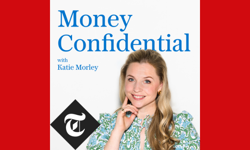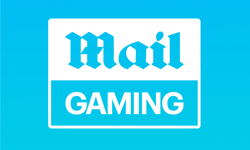This time around, the stakes are much more interesting; there is the wish of the industry to secure its future, not simply for itself, but more importantly for society, and (less importantly) for the institutional shareholders who have milked the industry in the last few years.
While the balance sheets are recovering from a severe malady, the debate is healthy, and the crisis we are now emerging from is at least waking the politicians up to the importance of a free and independent press, with the room to manoeuvre in an increasingly complex marketplace.
So what are the issues that will drive this particular acquisition cycle?
At the top of the list must be debt, and its causes. Newspapers do not have a profit problem. They have a debt problem. Gannett returned a Q409 margin of 20%. Johnston in the UK are at 12%, but have been bailed out by a Malaysian investor. Publishers on both sides of the Atlantic have been encouraged to acquire declining businesses, rather than using that money to arrest decline. The result is they’ve run out of acquisitions, and therefore run out of strategy.
The second issue must be about the future of newspapers and the extent to which they will recover from this current malady. The good news, is that I believe that newspaper company revenues will recover, in some markets more than others, but the shape of those revenues will be very different from what they are now. Classified – motors and recruitment in particular – are dead in the printed form. In markets where the industry has worked collectively and aggressively to convert these revenues into a digital form, they will see revenue recoveries on a lower cost base, which is good for profit. The US and Scandinavian markets have been particularly good at this. The UK far less so. In the US newspapers enjoy around 35% of digital advertising (display and classified). In the UK, where digital has about the highest percentage share of the advertising cake in the world, newspapers enjoy around 11%, and the share is falling.
The challenge is where this leaves news in print, once the single package formula is sucked dry. As I’ve written before the average newspaper doesn’t have a bat’s chance in hell of attracting meaningful content revenues online. The only possible solution might be for publishers to work together to create a single news portal, that blocks out all the aggregators. In France publishers have been experimenting with such an idea. In the UK, the most logical market for such idea because of the high market share of ten competing national dailies, I have muted the idea to be told, by several of the publishers, that it won’t work because their competitors won’t play. Duh?
While the forecasts suggest newspaper company profits will recover, they will be from distinct commercial verticals, rather than for the propagation of news. And so a fundamental threat exists for our raison d’être.
And of course there are the regulators. The puppets of their paranoid masters. It continues to astonish me that newspapers remain so heavily regulated in many countries. Until recently, in the UK, Trinity Mirror who account for less than 3% of total communications expenditure, faced a competition commission enquiry every time they sought to acquire even a relatively small property. In the USA, Gannett account for around 2% of total communications expenditure. But things are beginning to changing
Trinity Mirror recently acquired the regional newspaper interests of Guardian Media Group. The deal says a lot about the state of our industry’s confidence. The price was £45 million. Three years ago GMG’s regional assets were valued at over £200 million. Value to turnover ratio was 0.5, compared with a historical ratio in Europe of 3.2. So it’s a great deal for Trinity Mirror.
Meanwhile in the USA, MediaNews and Morris, have both come back from the brink. In both cases the management are greatly admired, both as newspaper people, and as innovators and drivers of change. The deals that restructure their finances, enable the companies to continue publishing and most importantly maintain publisher integrity, the vital element in the continuity of news. But both of them are private companies.
The question long term must be the compatibility of institutional ownership and the role of media in society. Trinity Mirror’s top three shareholders are insurance companies.
The first is the signal that some companies can buy themselves back from the market. The Daily Mail is arguably the most successful newspaper company in the UK. While it is quoted on the stock market, the company is firmly controlled by the Rothermere family. Its ability to control serves both the newspaper and its shareholders.
Similarly the Sulzberger’s control over the New York Times, has enabled them to innovate and grow, despite the influence of institutional shareholders.
Meanwhile, McClatchy are a company that are likely to follow the same route, buying control back out of the market.
Of course folk will point to Sam Zell’s acquisition of Tribune and Bryan Tierney’s of the Philadelphia newspapers, both of which have fallen into debt difficulties. But in both cases, the new owners have shown innovation, and an unwillingness to accept past shibboleths. Both have brought more light than darkness.
So which model will work in the future?
The last thing the industry needs is subsidies, as John Sturm the President of the NAA told Congress. While these are common in Europe, in various forms, the reality is that revenues are cyclical and recoverable. The industry does not have a long term revenue problem, it is buried in debt.
The issue of news provision, in a modern participative world must be addressed. One option is to provide protected status for legitimate news ventures, that are tax advantageous. So companies can be encouraged to support news operations, as part of their wider activities.
The Guardian Trust is a good example. Created in 1936 to “safeguard the journalistic freedom and liberal values of the Guardian, its core purpose is to preserve the financial and editorial independence of the Guardian in perpetuity” The Group has successfully expanded into a range of other publishing options, all of which exist to support The Guardian. Hence its decision to punt its regional titles, which are no longer the cash cow feeding is core asset. The problem is that this in itself encourages profligacy. The Guardian employs approximately 50% more journalists than benchmark analysis would suggest it requires for a paper its size. But it certainly shows that media sensitive models can and do work.
As I’ve learned through many projects across the world, freedom of expression is expensive, and in the West we not only take it for granted, but are danger of losing its objectivity and quality.
As we crawl out of the bathtub, into our industry’s next phase, now is the time to consider what we want to be, who should own what, and who drives our agenda.










